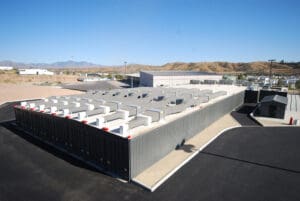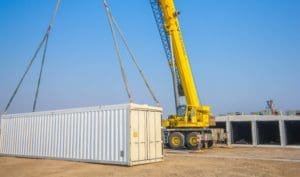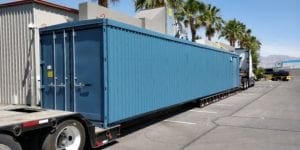Scaling Smart: How to Meet Growing Training Demands Without Breaking the Budget
Published

The surge in civilian firearm ownership in the United States has significant implications for law enforcement training. As of 2023, Pew Research Center reports that approximately 32% of U.S. adults reported owning a gun, with an additional 10% living in households where someone else owns one. While these figures have remained relatively stable over recent years, gun-related deaths and mass shootings are growing, amplifying the need for more live fire training to defend communities from increasing threats.
Law enforcement agencies are also under mounting pressure to meet evolving training standards, particularly in live-fire exercises. As requirements intensify, the challenge becomes how to expand training capabilities without incurring prohibitive costs. MILO Live’s Ready Range offers a scalable, cost-effective solution for police training with live ammunition.
Start Small, Adapt as Needed
MILO Live’s Ready Range is a modular shooting range system that allows agencies to begin with as little as one lane and expand up to 14 or more as their needs grow. This flexibility enables departments to align their training infrastructure with current budgets and scale operations over time.
The engineered shipping container design allows expansion from 40 to 500 feet in length. These modular units can be customized to match both your current goals and future plans. They can even be divided later; a 12-lane setup, for instance, could be split into two separate 6-lane ranges and redeployed to different locations.
Beyond linear expansion, Ready Range units can be configured for various training scenarios, including wide-open tactical layouts. This adaptability ensures that as training requirements evolve, the facility can be reconfigured without significant additional investment. Layouts can be reworked to accommodate specific drills, instructional needs, or even cross-agency joint training. Instructors aren’t stuck with a fixed design; they gain more control over the conditions they need to replicate.
Ready Range also offers full mobility, too. Ranges can be disassembled, transported, and reinstalled if training needs or locations shift. That makes your investment future-proof, even in the face of budget changes, leadership transitions, or strategic relocation. Each unit is delivered by truck and installed by MILO’s expert team, whether it’s for a regional training site or an agency’s home range.

Cost-Effective Construction
Constructed from recycled shipping containers, Ready Range reduces the need for new construction materials, leading to cost savings and environmental benefits. This approach not only minimizes upfront expenses but also shortens deployment timelines, allowing for quicker operational readiness. And with new material constraints under shifting trade policies, using what we’ve got already available in the US just makes sense.
Shipping container construction also simplifies permitting in many jurisdictions, especially when compared to building a traditional indoor range from the ground up. Agencies can install Ready Range facilities with minimal disruption to ongoing operations, and in some cases, without the need to acquire new property.

Preparedness and Liability Go Hand in Hand
Agencies that underinvest in live-fire training face not only operational setbacks but also patterns of legal exposure. Across jurisdictions, lawsuits tied to officer-involved shootings often cite insufficient or outdated firearms training as a contributing factor. While many cases settle before trial, internal reviews and public records routinely reveal gaps in documentation, frequency, and realism of firearms qualification.
Establishing a consistent and defensible live-fire training regimen is a risk management imperative. A scalable solution like Ready Range gives departments the ability to show that their training practices evolve with risk profiles, without waiting for a bond or new facility budget.

Shared Resources for Regional Collaboration
For smaller agencies, pooling limited resources to invest in a shared Ready Range facility can be a strategic move. This collaborative approach maximizes utilization rates and distributes costs, making advanced training facilities accessible to departments that might otherwise be constrained by budget limitations.
Multi-agency use also opens the door to cross-training and improved inter-agency response coordination, which is essential for rural regions or mutual-aid jurisdictions. A flexible, modular facility can support this type of programming without excessive wear and tear or scheduling conflicts.
Want to learn more about MILO Live’s Ready Range scalable solutions? Contact us today at info@milorange.com.

